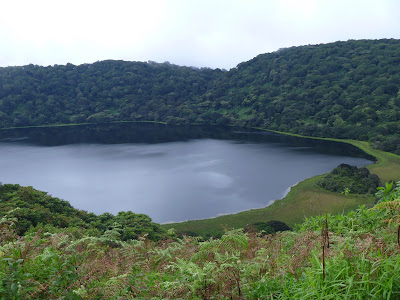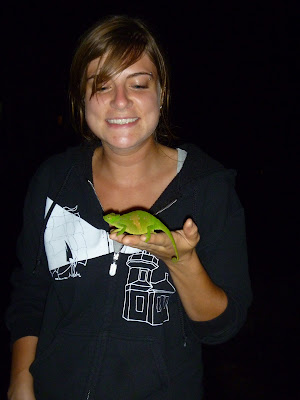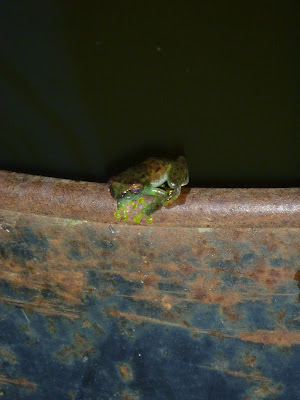Land snails are a super cheap form of food that the locals eat. We decided to try them out.
 |
| The snails on the table at the market. It definitely freaked me out to see them crawling around on the table with their little antennae! I didn't expect them to be so big either. |
A picture of the produce portion of the market (the snails are in the lower left corner).
The lady at the market preparing the snails for us. What she did was take each snail, stick a rod into the shell, pull out the snail, and move onto the next one. That's what she is doing in this photo. She then trimmed them up for us and gave them to us in a bag.
The pictures from the market are not that great of quality because I didn't really feel comfortable taking photos, let alone turning on the flash of my camera. It is a strange dynamic here with taking pictures. You don't want to offend anyone. This island is not really a tourist attraction - at all - and they are not used to seeing people take pictures. It's hard to explain, but I mean, wouldn't you feel strange if some young white girl came along and was snapping photos of the way you made your living every day because she thought it was foreign and amusing? Not to mention it is illegal to take photos of certain things in this country, such as the presidential palace or anything that is "of strategic importance" such as the port where the oil companies are located. The people are also sensitive about the country being portrayed in a negative light due to bad press it has received in the past, so taking pictures of anything that could possibly depict the country in such a way might upset someone.























